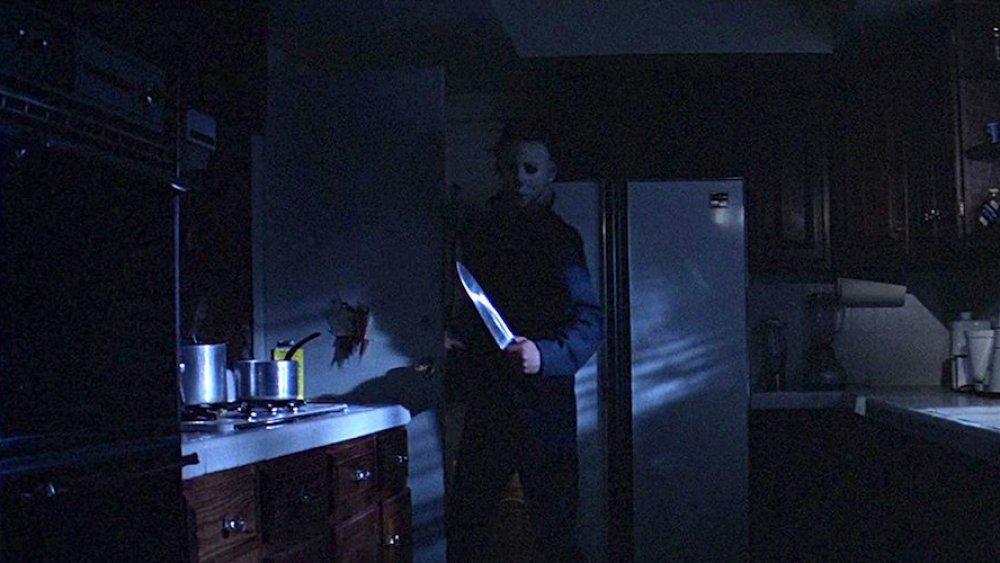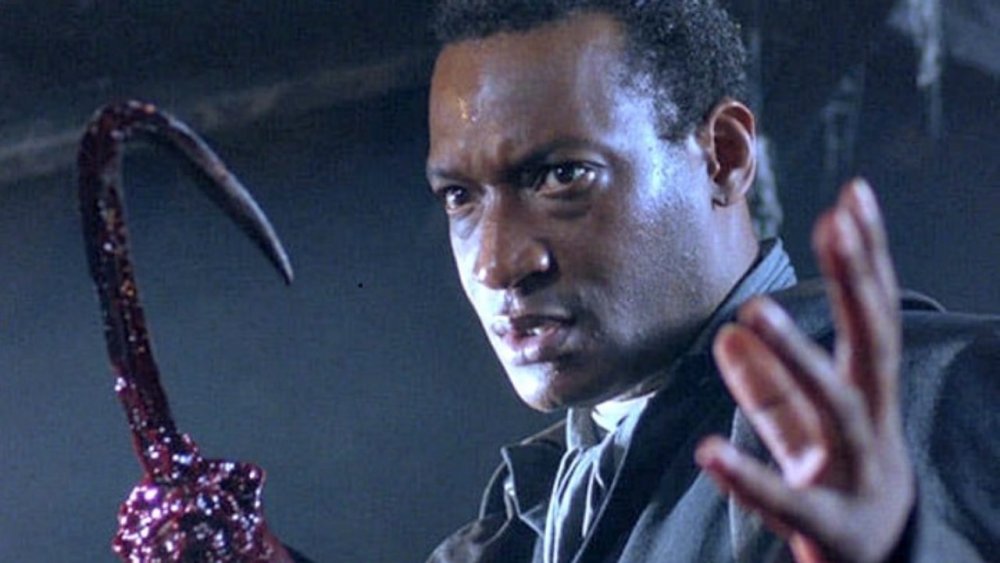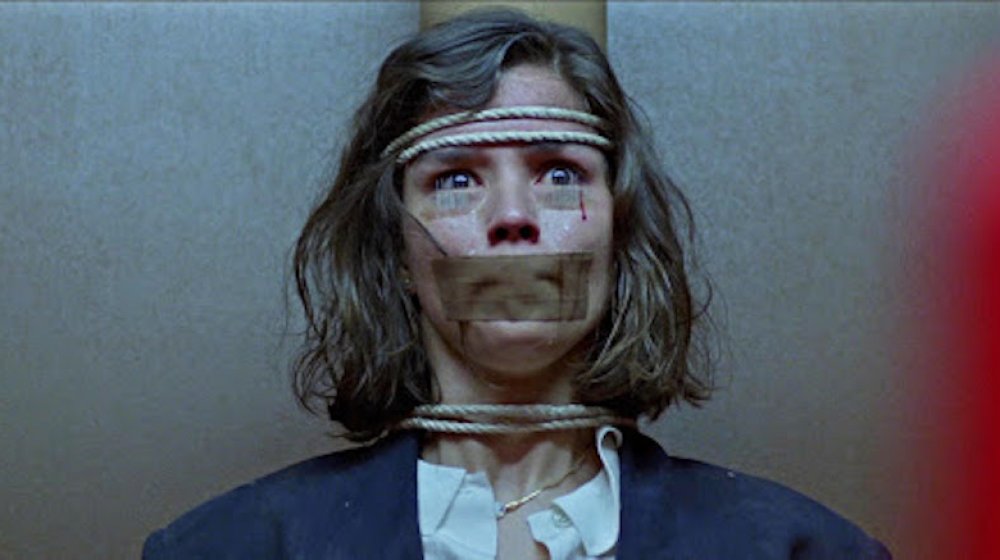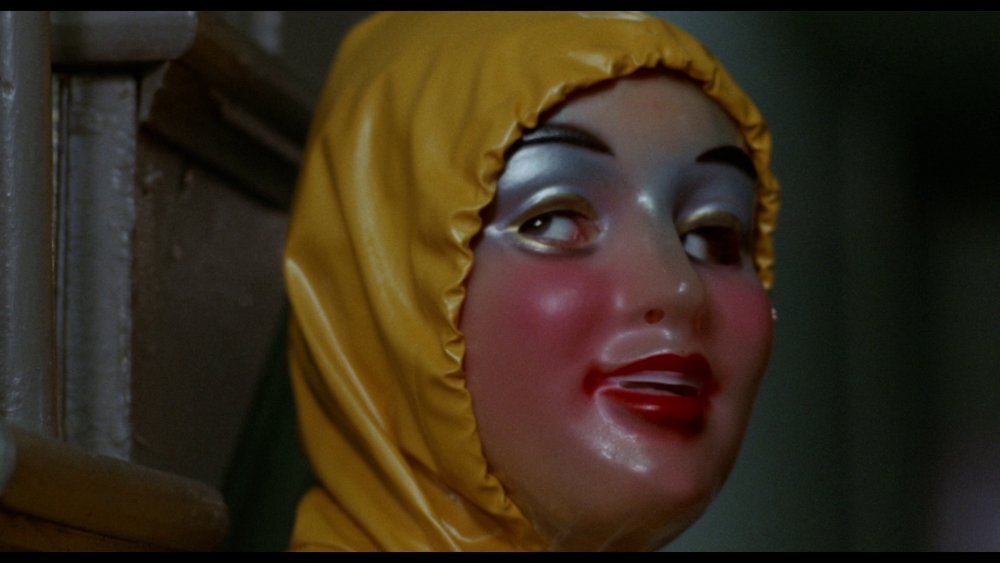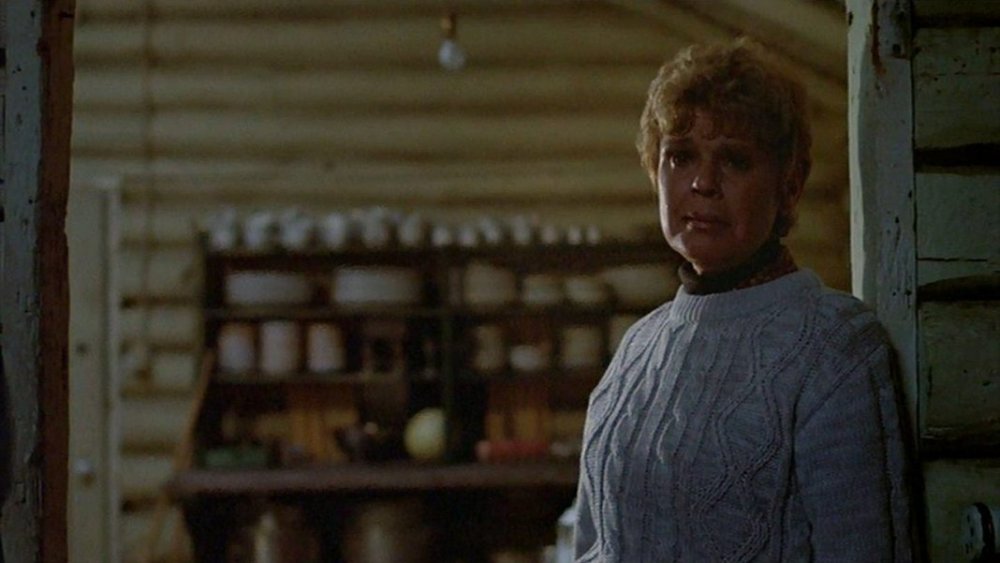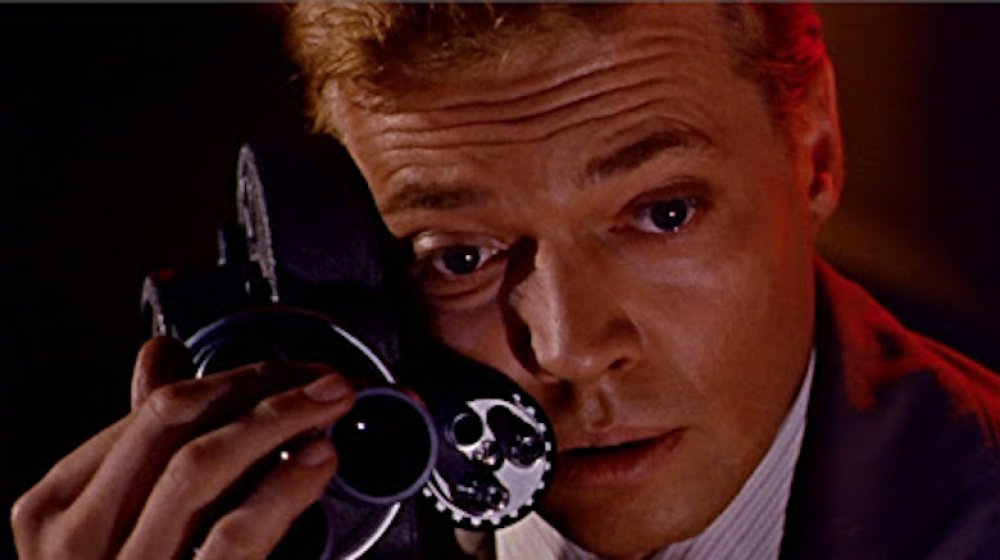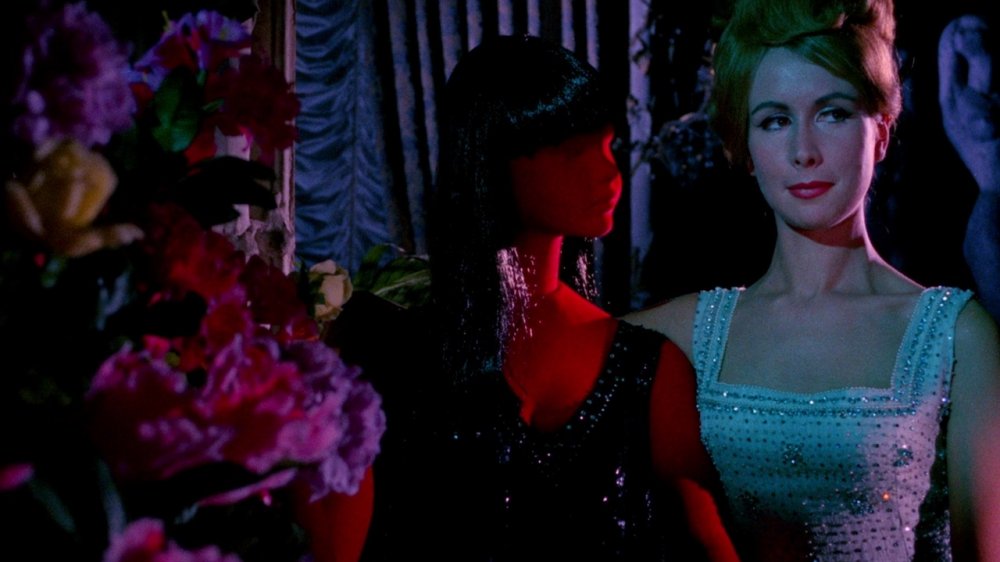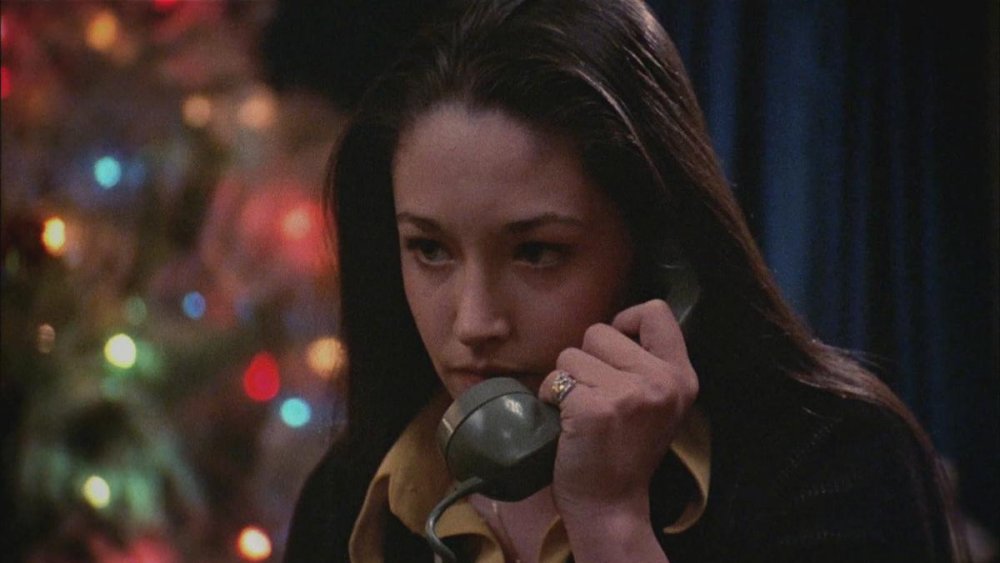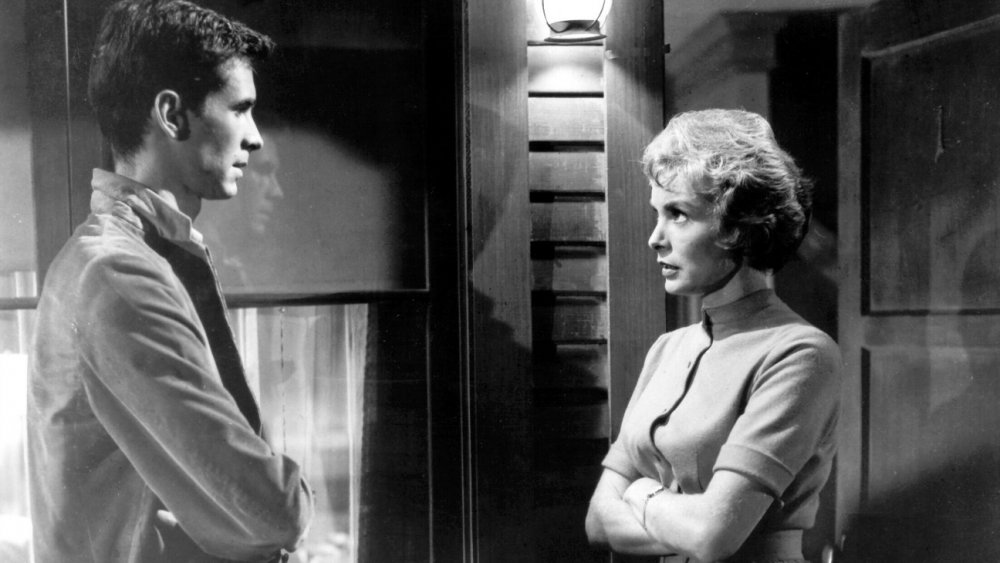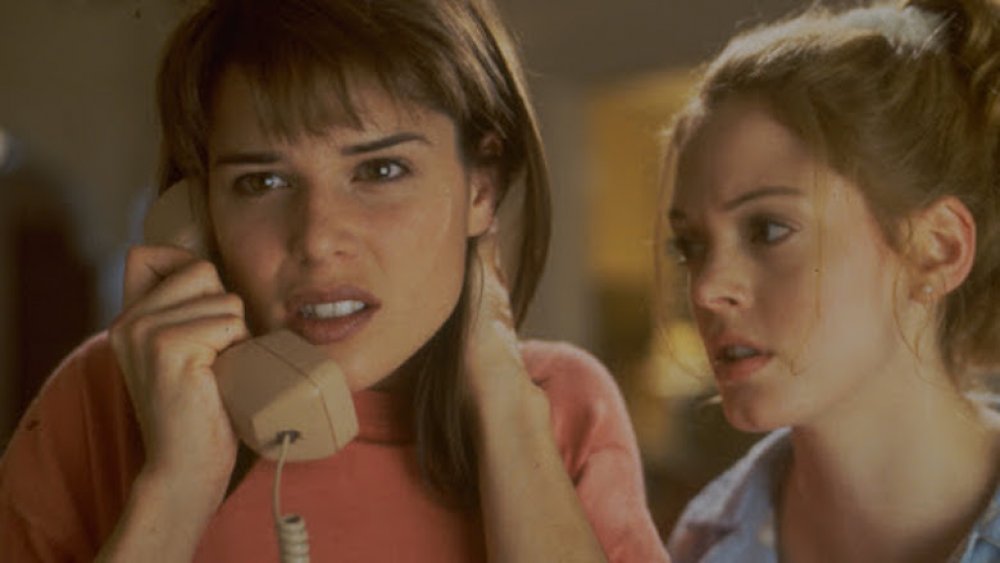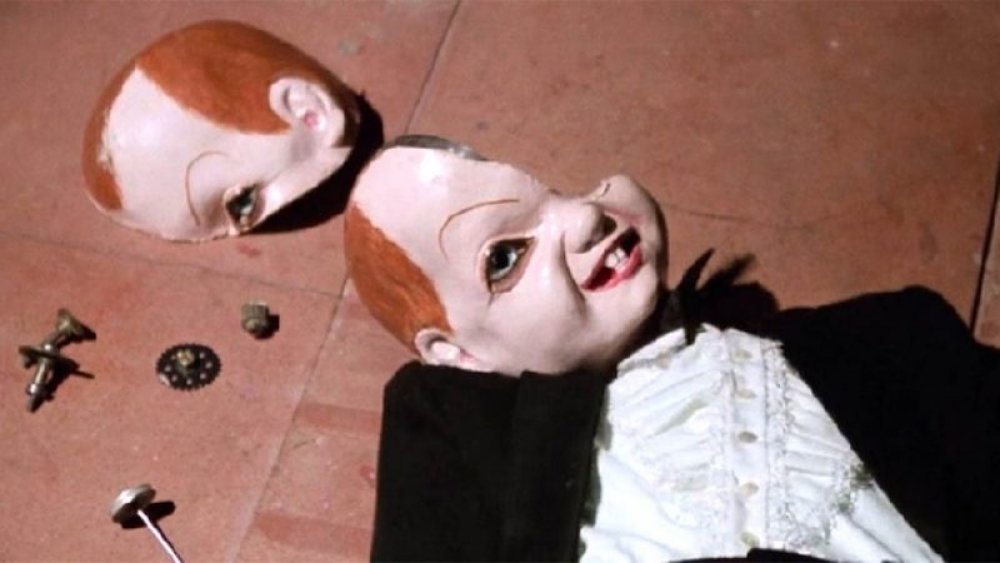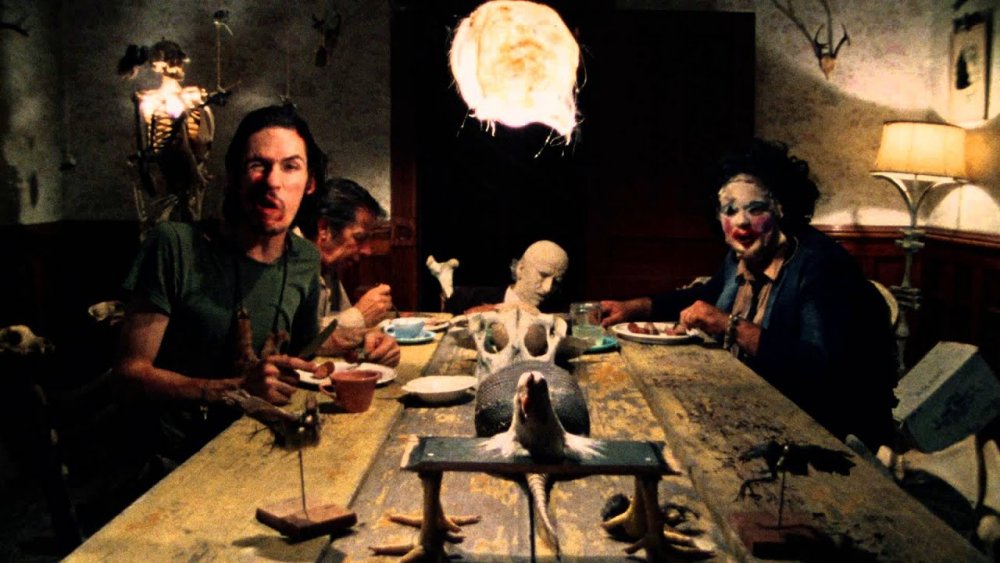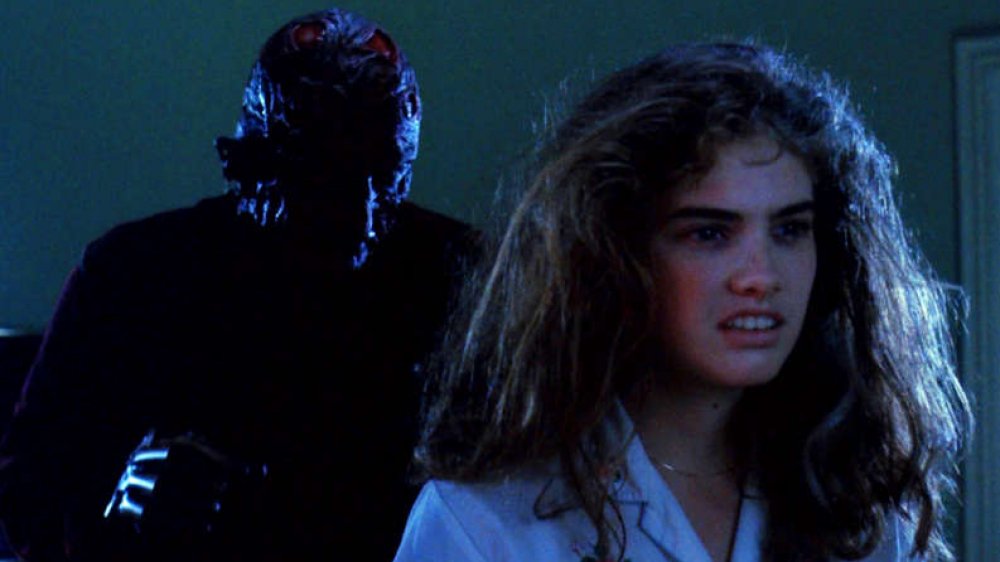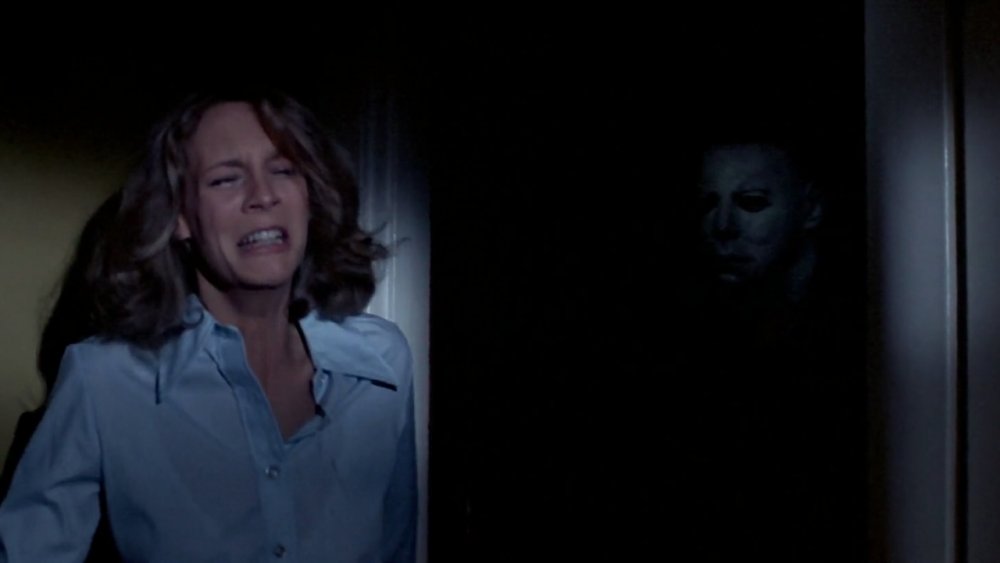The Best Slasher Movies Of All Time According To Rotten Tomatoes
Long ago, a terrible event happened in a small town. It was horrific, disrupting life for years to come, even once its gory details had faded from memory. The source of that violent trauma has lain dormant ever since ... until today. Now it wakes, hungry for mayhem, ready to terrorize the everyday citizens of its unfortunate home once more. It is unstoppable — until it isn't. But its prey might not live long enough to discover the weakness that could bring this creature, nightmare, spirit, or monster to its knees.
Sure, the formula is familiar and straightforward. But slasher films use that as a foundation, upon which many levels of psychological and cultural nuance are built. From camera work that forces the viewer into the villain's shoes to the bloody significance of the "final girl," these movies offer us catharsis, hope, and an encounter with the darkest corners of the human psyche. It's no wonder we love them — and no wonder so many of them are good. Here are the best slasher movies of all time, according to Rotten Tomatoes.
Candyman (1992)
Deep within Chicago's Cabrini-Green housing projects, sociologist Helen Lyle is researching urban legends for her graduate work. She discovers the story of the Candyman, used to explain a series of mysterious murders: Once a sought-after portraitist, Daniel Robitaille was brutally lynched by a group of men for the crime of loving a white woman. After mutilating him and setting a swarm of bees onto his dying body, Robitaille's righteous rage launched him into eternal life ... as the ghostly killer, Candyman.
Supported by solid social consciousness and critique, Candyman explores America's fraught history of racism, as well as the institutional violence that shapes places like Cabrini-Green. It is also a thrillingly scary slasher movie. Candyman's hook hand is an unforgettable bit of iconography, as are the swarms of bees who follow him as he intones, "BE MY VICTIM." It's no wonder that Candyman is considered one of the best slasher films of all time, nor that it's garnered a reboot written by modern mayhem master Jordan Peele.
Opera (1987)
In horror legend Dario Argento's Opera, the slasher movie gets a giallo makeover. Young opera singer and understudy Betty has the opportunity of a lifetime when the actress set to play Lady Macbeth is struck by a car. But it's not long before a body count filled with grotesque mutilations piles up. Stagehands turn up dead, the production's pet ravens drop like flies, and Betty is forced to watch a home intruder kill her boyfriend. Betty suspects this all has something to do with her abusive mother, murdered several years before — an event Betty witnessed and is doing her best to repress.
Inspector Alan Santini, working like mad to get to the bottom of the case, is the key. Betty discovers that he had actually been one of her mother's lovers – and that they had killed together, before Santini finally murdered her. Since Betty looks so much like her mother, Santini's psychosis has been triggered, including his violent ways. Opera features quintessential Argento imagery to accompany the slasher murder — an unkindness of ravens set loose in a gorgeous Baroque opera house is a high point — and a twisty plot that keeps viewers on their toes. Opera's sterling reputation is well-deserved.
Alice, Sweet Alice (1976)
Brooke Shields' first screen role is a real doozy in Alice, Sweet Alice — originally titled Communion — which comes in at number 11 on Rotten Tomatoes list of essential slasher movies. Shields plays young Karen, who is on the verge of her first communion ceremony when she is found strangled to death beneath a burned church bench. Karen's sister Alice, a troublemaker with anger issues, is plunged into psychosis when the family's landlord assaults her, resulting in her institutionalization. Reeling with grief, the family struggles to hold together as suspicions take shape: Could Alice have killed her little sister?
As it turns out, Karen's communion unhinged the parish housekeeper, Mrs. Tredoni, whose own daughter died on her first communion day. Tredoni has stalked and murdered multiple people she considered sinners, all while wearing Alice's yellow raincoat and plastic mask. Her rampage reaches its peak as she stabs the family's priest, Father Tom, after he denies her communinion. Featuring eerie music and a potent backdrop of Catholic iconography, Alice, Sweet Alice ends ambiguously and manages to haunt even the most seasoned horror fan years after they've seen it.
Friday the 13th (1980)
While slasher films often feature bait-and-switches, Friday the 13th has arguably one of the most shocking twists in movie history. Take a moment to reflect on what you know about the film. Like most people, you probably associate the series with its hockey mask-wearing, machete-wielding villain, Jason Voorhees. But Jason does not appear in this original film. The killer is Jason's mother, Pamela, whose trauma of losing her young son to irresponsible camp counselors transforms into a psychotic break when Camp Crystal Lake opens once more, decades later.
We watch as Mrs. Voorhees stalks and hunts the new camp counselors one by one, especially targeting those who are having sex on camp grounds, until her epic showdown with final girl Alice Hardy. With an iconic score and phenomenal special effects by horror legend Tom Savini, it's no surprise that Friday the 13th was part of the 1980s boom that revitalized the entire horror genre.
Peeping Tom (1960)
Considered the first official slasher movie, Peeping Tom was also, as Ghostface points out in Scream 4, the first movie to put the audience in the killer's point of view to incredibly unsettling effect.
Shy loner and aspiring filmmaker Mark Lewis is our protagonist, who we follow around London as he spies on women and then begins to murder them. Worse, he films these assaults so he can capture the look of abject fear on their faces — a moment he relishes over and over again, in the privacy of his own home. Paired with imagery from Mark's job as a part-time soft-core pornography photographer, the link between sex and death in the slasher movie begins its long history here in Peeping Tom. It is because Mark cannot bring himself to murder virginal Helen that he ends his rampage by taking his own life — with the shaved-down point of his own camera tripod, no less.
In a nutshell: Peeping Tom is not just terrifying, but innovative, even by today's standards.
Blood and Black Lace (1965)
Mario Bava's seminal Blood and Black Lace became the template for the slasher movies that would make Dario Argento's career decades later. Sometimes more murder-mystery than horror flick, Bava makes up for this imbalance in Blood and Black Lace by making sure the killer's hunting sequences are prolonged. It is a hybrid slasher movie, really, being part body-count horror, part giallo masterpiece.
The story follows an investigation of murder and fraud that leads back to a fashion design business owned by Max Morlan and his partner, Countess Christina Como. A missing diary comes into play as Max and Christina's embezzlement comes to light. They are, as it turns out, a mask-wearing, serial killing team, desperate to find the diary.
Unlike other slashers, there is no trauma triggered in the story; their serial killing is opportunistic. Bava's ability to build tension — the plot twists and turns like a knife in the belly — makes Blood and Black Lace a truly unique horror film, and one of the slasher sub-genre's keystone works.
Black Christmas (1974)
"The call is coming from inside the house," may be a well-worn trope today, but back in 1974, it was part of what made Black Christmas into a slasher classic. Following a group of young sorority women as they enjoy a final get-together before Christmas break, their fun night of partying turns deadly after a man sneaks into their attic and begins brutally killing them one by one. To complicate things, Jess has just found out she's pregnant and is planning to have an abortion, a decision that her abusive boyfriend Peter is wholly against. Peter is so aggressive in his attempts to get Jess to change her mind that this slasher film's bait-and-switch suggests he might be the one murdering Jess's friends and saving her for last. But, when Peter dies, it is revealed that he is not the culprit.
Unlike other slasher films, Black Christmas never entirely reveals its killer. All we know is that a man keeps calling the house, saying nasty things and mentioning people named Billy and Agnes. Billy seems to have some kind of childhood connection to the sorority house — but the truth of it remains obscure. Our final look at Jess is tainted by a mysterious figure's slow descent, and the ringing of the phone. Is it Billy? Perhaps. But we'll never know, and that's the most terrifying part of Black Christmas.
Psycho (1960)
Alfred Hitchcock's Psycho isn't just one of the best slasher movies of all time — it's one of the best movies of all time, period.
Marion Crane ends up at the rundown Bates Motel when her plan to make off with $40,000 of her boss's money goes sideways. The motel's owner, young Norman Bates, seems odd right off the bat, but Marion assumes his isolated life has simply made him a tad strange. Norman's psychosexual conflict with his mother is far more harmful than she assumes, however. When she is murdered in the shower in the film's most iconic scene, viewers assume it must be Mrs. Bates — especially as we, and Marion, have overheard her complaining about Marion's presence before.
This is not, of course, the case. In an iconic twist, Psycho reveals that Norman is the murderer, having killed his mother long ago. Psycho has aged like fine wine and holds up beautifully all these decades later. Just don't watch it before you jump in the shower.
Scream (1996)
Coming in at fifth place as one of Rotten Tomatoes' best slasher movies of all time is Wes Craven's metatextual Scream, a film that revitalized the horror genre for a new generation. Using sly wit and snappy dialogue, Scream calls out horror movie tropes even as they take place on screen. Even better, Scream takes a number of slasher movie tropes, like the virginal final girl, and smashes them to bits, allowing the genre new room to breathe and grow.
Complicated leading lady Sidney Prescott is already processing her mother's rape and murder when she discovers said mother's extramarital affairs. This new information eventually leads to the unraveling of Sidney's own life as she becomes a target for murder and revenge by her boyfriend Billy Loomis, whose father was sleeping with Sidney's mother, prompting Billy's mother to abandon them both.
As Scream's killer infamously asks, "what's your favorite scary movie?" A whole lot of slasher movie fans say Scream, and Rotten Tomatoes agrees.
Deep Red (1975)
Deep Red is the film that established Dario Argento's unique take on the giallo slasher, as well as his first collaboration with Italian prog rock band Goblin. Considered his masterpiece, the film is full to the brim with prolonged and gruesome murders shot so artfully, they're as difficult to look at as they are to turn away from.
Like Friday the 13th, Deep Red's plot twist involves a mother suffering a psychotic break who begins a rampage to try and cover up the terrible things she has done. As is customary in most slasher stories, Martha's original dark deed is decades in the past: She murdered her husband after he threatened to institutionalize her, and sealed him in a room in their old house. Her young son Carlo witnessed the whole thing. It's only once Carlo's best friend Marcus starts digging that Martha re-emerges, seeking to stop him and anyone else who would uncover their terrible secret. Like all of Argento's heady and plush films, Deep Red is not for the gore-avoidant or anyone allergic to creepy dolls.
The Texas Chainsaw Massacre (1974)
Tobe Hooper's splatterfest extravaganza The Texas Chainsaw Massacre is notorious for its gore and its political message. Thanks to urbanization and industrialization, the entire Sawyer clan lost their jobs at the local meat-packing plant that provided a livelihood for everyone in the area. Starving, desperate, and left to their own devices, the Sawyers begin cannibalizing people passing through town.
The movie opens with a warning that the graphic violence is based on a true story, which is only partly accurate, as Hooper integrated aspects of Wisconsin serial killer Ed Gein's modus operandi into his film. But really, that warning is Hooper's open jab at the media of the day, which he saw as complicit in the Vietnam War and the Watergate scandal. As the film features such atrocious violence in great detail, the social commentary embedded in Texas Chainsaw Massacre can only really be appreciated by fans of the slasher genre in particular. But for that population, it is a extraordinary journey into darkness. Made on a tiny budget, this brutal slice of dark Americana is now considered a horror classic.
A Nightmare on Elm Street (1984)
"One, two, Freddy's coming for you," the spooky children's rhyme warns viewers of Wes Craven's A Nightmare on Elm Street. Freddy Krueger was, in life, a child killer, murdered by the parents of his town. But little did they know, Freddy had gone on to take an astral form that could appear in people's dreams. When the children of the people who killed him are old enough, he begins killing them in their sleep, where their parents can do nothing to protect them.
Nightmare's battle sequences take place in dreamscapes, where the laws of physics and waking life don't necessarily apply, making them uniquely scary. In the process of fighting Freddy, heroine Nancy Thompson becomes one of the greatest final girls in horror movie history, while wisecracking Freddy Krueger steps into the slasher villain hall of fame. A Nightmare on Elm Street might seem dated when it comes to design and fashion choices, but the fear it provokes is as real as it was all those decades ago.
Halloween (1978)
So we arrive at Rotten Tomatoes' number one pick for best slasher movie of all time: John Carpenter's incomparable 1978 film, Halloween. Featuring a young Jamie Lee Curtis in her first leading role as Laurie Strode, Carpenter's Halloween has every single moving part in perfect alignment: a creepy score, stunning performances, and a campaign of terror that resonates to this day.
Halloween's suburb of Haddonfield is a perfect small town with a dark history: Michael Meyers, then six-years-old, viciously murdered his older sister in 1963 and immediately went mute. Years later he escapes from the institution he's been held all this time and begins stalking Laurie, bent, for obscure, evil reasons, on destroying her.
It's not just Carpenter's masterful direction that makes this movie one of the best slashers ever made, it's also the ambiguity of the story. Jamie Lee Curtis beautifully captures Laurie's entire arc as the greatest-ever final girl, from her naive start to her relentless fight for survival against a foe double her size and exponentially more enigmatic. It's number one for a reason, and won't be budged from its place any time soon.
